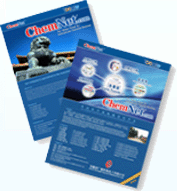Chemical News
-
China: Three oil majors differ on retail market expansion in 2010
https://www.chemnet.com Jul 22,2010
China three state-run oil giants: PetroChina Co Ltd, Sinopec Corporation and China National Offshore Oil Corporation (CNOOC), started to change their strategies in developing oil retail market in 2010, but the three's strategies differ. Sinopec switched from increasing retail stations in previous several years to improving retail sales volume of each single petrol station this year; PetroChina shifted to focus on developing number of petrol stations in 2010; while CNOOC attaches importance on exploring oil wholesale channels but develops tardily on expanding retail network.
Sinopec focuses on improving sales volume of each station
In 2010, Sinopec attaches importance on increasing refined oil retail sales volume of each single petrol station rather. It slows down pace on building new or acquiring more petrol stations this year or even plans to shut down stations with bad locations or bad sales performance.
Sinopec once snatched up a large number of petrol stations in 2005-2007 when independent stations were plagued with refined oil sources and were forced to be sold to oil majors. Sinopec had aggregate 29,698 petrol stations by the end of 2009 via acquiring, building and leasing petrol stations, up 1.4% from one year before.
After the oil major had set up a mature petrol station network across the country, it adjusts its strategy to focus on sales of each station. According to Sinopec’s 2009 annual results, the average daily sales volume of petrol stations dropped 7.5% year-on-year to 2,715mt in 2009. In order to stimulate sales volume in petrol stations, Sinopec sometimes triggered "price war" against its rival PetroChina this year in 2010. For instance, before the central government adjusted down gasoline and gasoil retail ceiling prices on Jun 1, Sinopec offered a discount as high as Yuan 1-1.3/liter in its petrol stations in Central China's Hubei Province. According to Sinopec' s Q1 report, Sinopec had 29,795 petrol stations as of the end of this March, up a slight 0.33% from the number at the end of 2009. The company forecast that its average sales volume of petrol stations will be 2,769mt in 2010, up 1.99% from the average daily sales of stations for the whole 2009.
PetroChina gives priority to retail network construction
PetroChina switches to retail network construction in 2010 from the tenet of steadily lifting retail rate of petrol stations in 2009. PetroChina has been long lagging behind Sinopec on ownership of petrol stations. By the end of 2009, PetroChina operates 17,262 petrol stations, far lower than 29,698 units run by Sinopec. In order to grab a larger market share in the retail market, PetroChina started developing retail network strenuously this year. Especially as its 10-mil-mt/yr Qinzhou refinery is to come online soon, the oil giant needs to increase retail outlets.
C1's survey showed that PetroChina might have around 19,000 petrol stations (including self-owned units and franchise service stations) as of the end of this June, up about 10% from the figure at the end of 2009. Take Wuhan, the capital city of Hubei, for instance, PetroChina now has 111 petrol stations in Wuhan, and Sinopec has 250 in the city. While three years ago, PetroChina has less than 30 stations in Wuhan. "It took PetroChina three years to complete a retail network construction in Wuhan, while it took Sinopec 30 years to reach the same scale. PetroChina added at least 10 petrol stations in Wuhan in the first half this year", a source with PetroChina Wuhan branch said.
Additionally, PetroChina plans to set up at least 100 petrol stations in Guangdong province this year.
CNOOC slow in retail network construction
CNOOC develops tardily in retail network construction when the other two oil majors develop rapidly. CNOOC earlier planned to increase the number of petrol stations to total 1000 in the Pearl River Delta, the Yangtze Delta and Bohai Sea Ring area in 2010 through building, acquiring and leasing petrol stations. Presently, CNOOC has only around 250 petrol stations, just one fourth of the target number. The offshore oil giant can barely finish the task in the second half of 2010.
A source with CNOOC told C1 that the company had 187 petrol stations in early 2009, and added only 63 stations in the past one and a half year. This is mainly because that China already had a large number of petrol stations and good locations are all occupied by petrol stations. The competition among petrol stations is vehement and sometimes petrol stations have to face deficit. Moreover, the purchase or construction cost of a petrol station is too high at present. Furthermore, CNOOC only has several refineries, and its output of gasoline and gasoil up to the national standard is low. Hence the company pays more attention to developing refined oil wholesales channels rather than retail network.
 Print |
Print |  add to Favorites |
add to Favorites |  Close
Close


